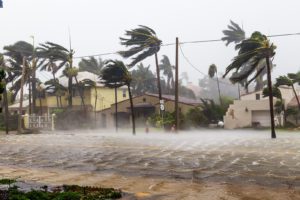
Last month, in the face of Hurricane Dorian, American utilities increased staff onsite and in call centers. However, when the storm reached the Carolinas, it left more than 230,000 people without power. The fuller solution to massive outages lies in improvements to the underlying infrastructure and the tools that utility companies rely on.
Traditional power grids function via centralized generation––meaning utilities focus on managing supply from a few generation and transmission centers to all of their customers. When confronted with destructive storms or malicious cyberattacks, centralized systems risk widespread outages that can take hours or days, to return online. Decentralized power grids and power generation, on the other hand, effectively minimize the impact of these events because fewer customers are connected to faraway generation supply, and can effectively island themselves when disruption occurs.
For utilities to embrace multi-party distributed generation – and reap its benefits – they must also change their operational and cybersecurity approaches. Microgrids are an important part of a power utility’s renewable energy strategy and business model for providing additional services to their end customers––but they present new security challenges. As these microgrids proliferate, a compromise or loss of control can severely impact the safety and reliability of the distribution grid. Securing these microgrids can also be challenging, as 1. multiple parties require access, 2. various assets may have already been deployed, and 3. it’s common to have edge to edge interactions (for automated power management and control) between controllers, storage, and generation subsystems, whether within or between microgrids. As a result, utility cyber strategy must include distributed authentication, access control, and data integrity between storage, renewable assets within the microgrid and between interconnected microgrids. The utility’s distribution control system must also provide integrity and access control to ensure that data generated by DERs is authentic.
Though on-the-ground reinforcements are a necessary part of preparation for severe weather conditions, it’s essential that utility companies advance legacy systems to better protect consumers from dangerous implications of power disruptions. The use of decentralized systems provides stronger grid support that can better withstand the physical toll of severe weather, as well as address the industry’s cyber risks. Microgrids have incredible potential for the reliability, resilience, and security of the U.S. energy infrastructure while also creating a more sustainable future.










